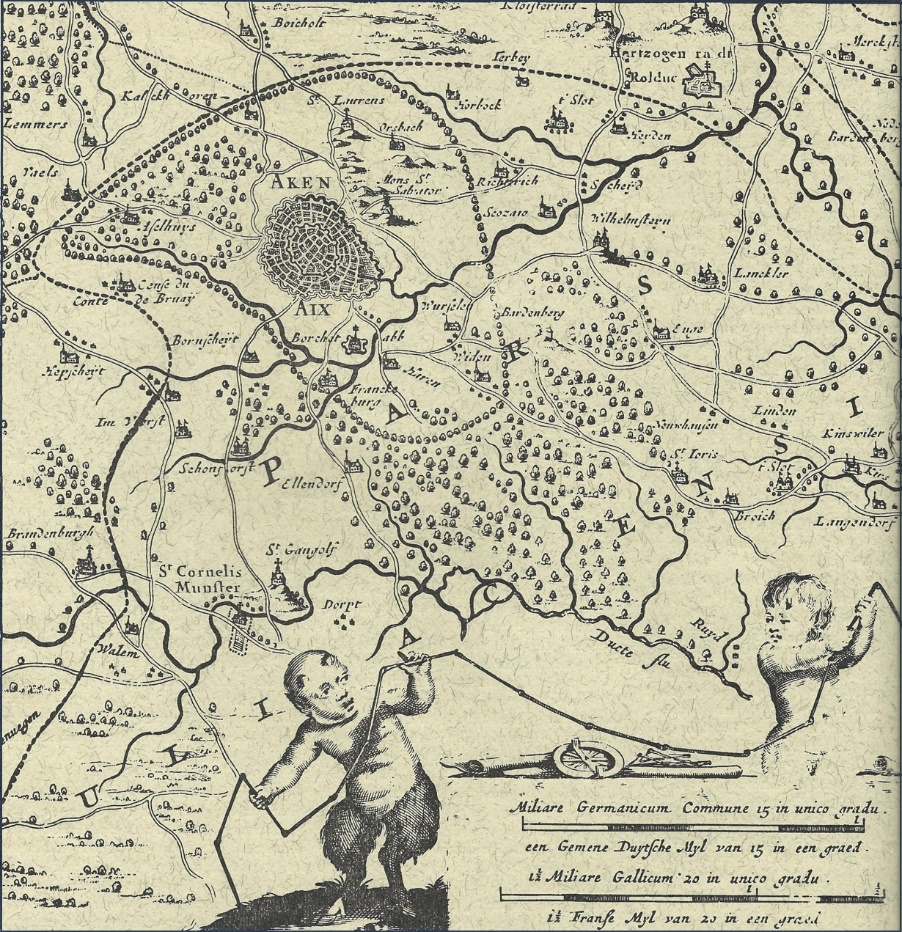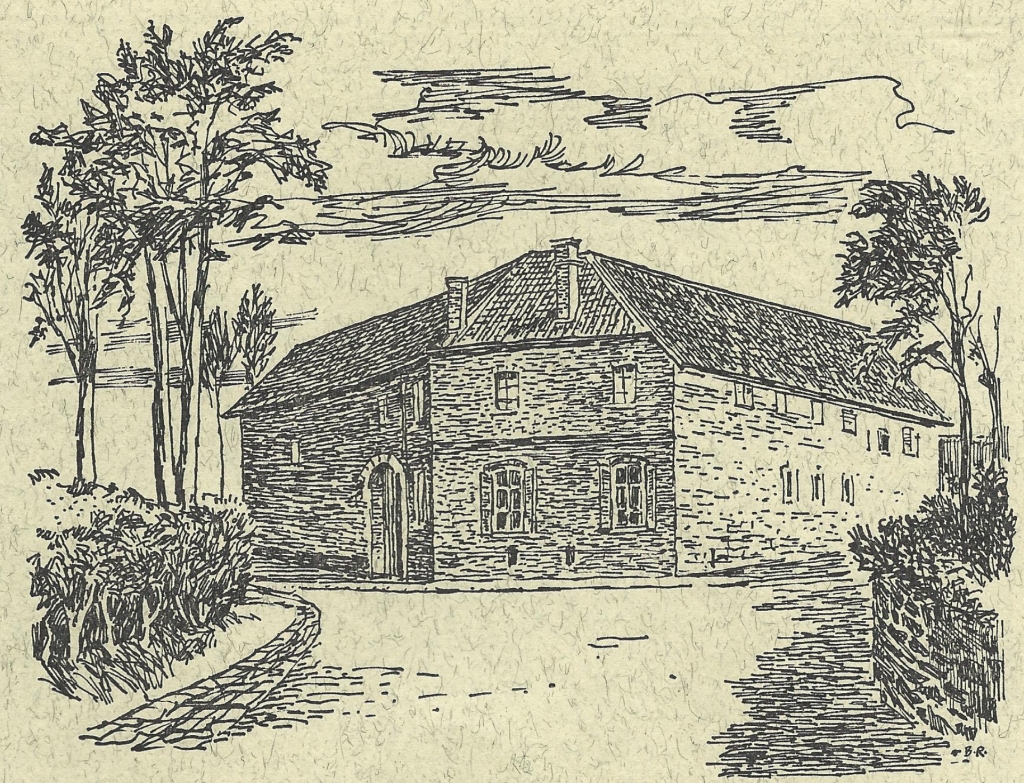From today's point of view, it is surprising that this unit has been preserved for almost five centuries, looking at the map of those days Almost ten neighboring more or less expansionist states surrounded the Aachen Empire like a narrow ring. Probably only the fact that emperors and kings repeatedly protectively held their hand over the former coronation city of Aachen, the "archchair" of the German Empire, the Aachen Empire owes its continued existence even in threatening situations. And there were enough of such situations! Especially the neighbor to the east, the Duke of Jülich, who had built a fortress, Fortress Wilhelmstein in Bardenberg, within spitting distance to the border to the Aachen Empire tried over and over again to incorporate the Aachen empire into his duchy.
Since the Aachen Magistrate could not rely on the favor of its emperors and kings alone, it surrounded its empire with a strong fortification, a ring of ramparts and ditches, the so-called ‘Landwehr’, which was popularly called the Landgraben. First of all, the border was against the Duchy of Jülich and secured also Würselen, which was located on the most endangered north-east corner of the empire. It was therefore protected by the Landwehr as early as 1419 between Bardenberg and Würselen along the Würselener border.
The Landwehr consisted of a four-meter-high central wall and two approximately 1,20-meter-high side walls separated by three to four-meter-deep trenches. The main wall was planted with a wide, dense hedge of hornbeam and oaks that were pruned to allow them to develop only to the side. Over the years, as a result, the branches grew into an impenetrable thicket.

Excerpt from a map of the Duchy of Limburg with the Aachen Empire
The street passages were particularly secured by tollgates and barriers. In addition, eight watchtowers were distributed throughout the Landwehr, at the strategically important points. One of these towers was located in Morsbach. In times of war, the towers guard posts were positioned there, who had to report the advancing enemy immediately. In peaceful periods of time, for the sake of economy, foresters use the towers as dwelling. The construction of the enormous fortification, which began with great vigor, soon stalled - for a reason that also today brings many construction projects to a premature standstill: Money became scarce in the coffers of the Aachen Empire.
Hence, it lasts nearly fifty years to complete the Landwehr around the Aachen Empire. It now offered protection from undesirable, moving people, predatory shingles, wandering piles of armies. But it was difficult to defend in a real case of war because of its great expansion. Time and again foreign troops broke into the Aachen Empire, from which the Würselen-based quarter also suffered greatly.
As early as 1410, even before the construction of the Landwehr, the Count of Virneburg and his people invaded the village and completely burned Würselen. In the wars of the following centuries, it were the troops from Brandenburg and the Pfa1z Neuburg in 1699 and 1610 that devastated Würselen after the inhabitants had previously fled into the forests. After the Brandenburg and Neuburg troops, the inhabitants of Würselen made acquaintance in 1641 and 1642 with the soldiers of two other German principalities, the Hesse and Weimarer, who were no less unpleasant. Once again, Würselen was almost completely destroyed under serious acts of violence.
Barely rebuilt, the French moved in in 1678. The inhabitants of Würselen, now already experienced in dealing with foreign troops, retreated again in time to the safe forests. When they ventured out again, they found little more than smoking debris from their homes.
For the Aachen Empire, however, the end comes only a good century later.

The Morsbach "castle," destroyed in 1944, above the foundations of the fortification of the old Aachen Empire
In 1792, the troops of the French Revolution enter the left side of the Rhine and crush all the small and smallest states and dominions to be incorporated in the "one and indivisible" republic. "The French Revolution” also swept away the heads of the duchies, knighthoods and city-states crowned by grace of God.
"The French turned Aachen into the capital in the department of de la Roer, winning the first and decisive victory over the former political narrowness and small-state discord.
Twenty years of French government made the Aachen people forget that the Duke of Jülich had been the hereditary enemy throughout his life. Now the ground is prepared for a fundamental and comprehensive reorganization, which is not only reflected in the municipal area, but also in the economy and in the cultural development of the Aachen country and its communities.
Under French government, Würselen is initially divided into the four districts of Würselen, Morsbach, Scherberg and Schweilbach. But November 1, 1800, a decision is made that is most important for the shape of today's city: All the villages, hamlets and courtyards are grouped together into a Grand-Würselen having one single mayor.
The modern era has begun.
Würselen, one of the quarters in the Aachen Empire for almost 500 years, belongs among the new masters to the canton of Burtscheid, arrondissement Aachen, Département de la Roer.
It is now a "community", a congregation, and the name of the mayor at the time deserves to be noted here because he has become the first of a long line. His name was Peter Leuchter and ran the administrative business until 1808.
Please observe the copyright of the city of Würselen.
For more information see here.
Some comments and explanations have been added.Such information is presented as follows:
Comments and explanations go here.

